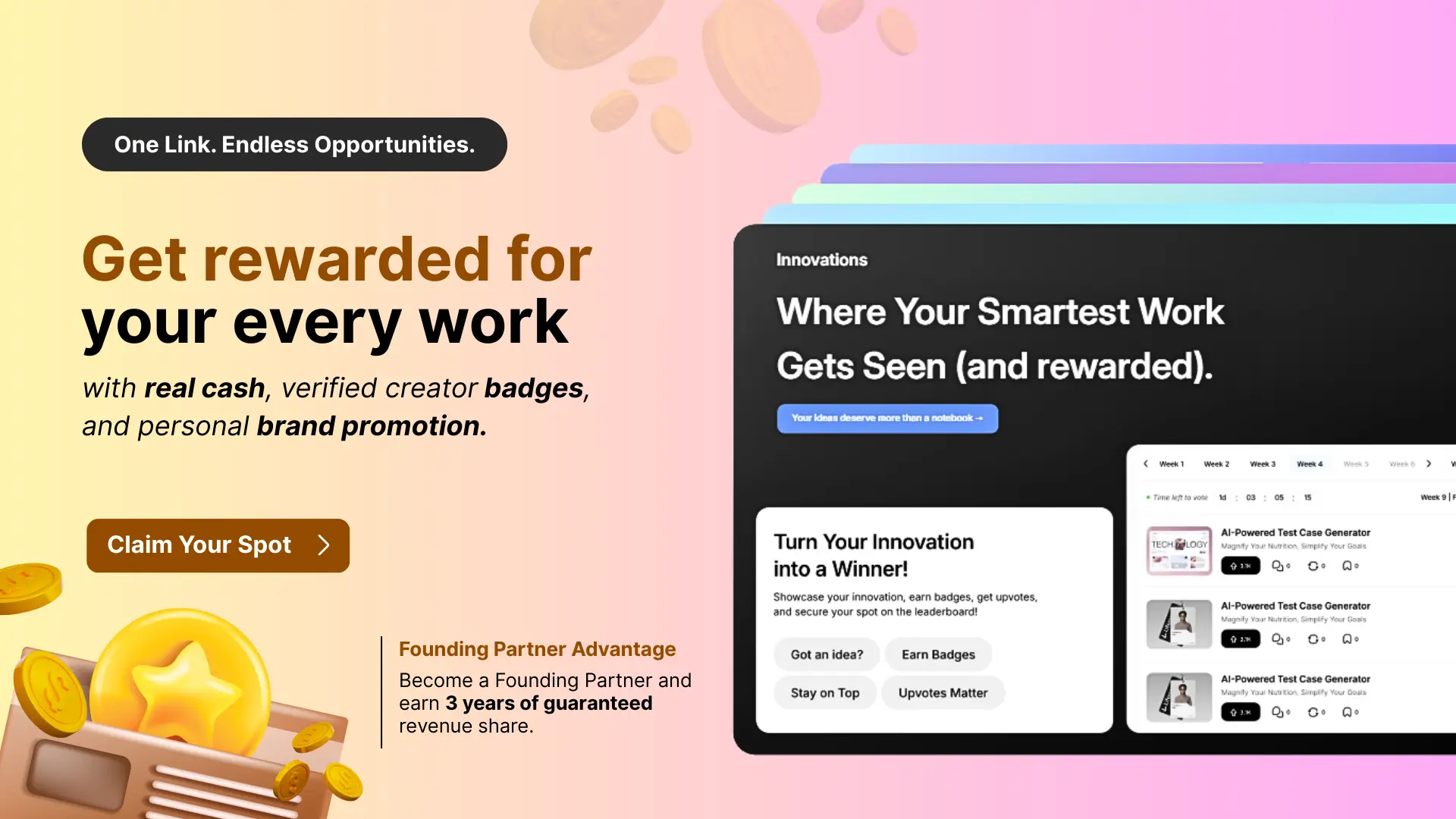
Applicant Tracking System for Restaurants
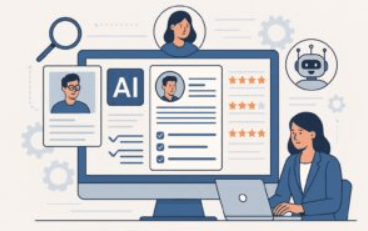
Author: Hi, I'm Shivam Gupta, an experienced authority in HR technology and recruitment optimization with over a decade of experience transforming talent acquisition processes across the global market. Additionally, we operate another software development brand, Appsierra.
Applicant Tracking System for Restaurants | Top Hiring Software for Faster Staff Recruitment
1. Introduction: Why Restaurants Need an Applicant Tracking System in 2025

Rising Hiring Challenges in the Restaurant & Hospitality Industry
The restaurant applicant tracking system has become essential infrastructure for modern food service operations. The restaurant industry faces unprecedented staffing pressures that have fundamentally changed how operators approach talent acquisition and workforce management through specialized hiring software for restaurants.
Operator consensus reveals that staffing shortages create cascading operational challenges affecting everything from service quality to profitability, making recruitment software for restaurants a top business priority. Modern restaurant hiring software demands speed and efficiency that manual processes simply cannot deliver, leaving restaurants struggling to compete for qualified talent without proper ATS software for restaurants.
The competitive labor market means candidates accept the first viable offer they receive, making response time and hiring velocity through restaurant ATS solutions critical success factors. Urban and suburban markets show dramatically different hiring dynamics, requiring restaurants to adapt recruitment strategies based on local labor market conditions using advanced hospitality hiring software.
Generational shifts in the workforce mean younger candidates expect digital-first communication, mobile accessibility, and immediate responses from potential employers through modern restaurant recruitment software platforms.
Increasing Need for Automation in High-Turnover Roles
Manual hiring processes create unnecessary delays that cost restaurants money through extended job board advertising, management time investment, and lost opportunities to secure top candidates—problems solved by restaurant staffing software. Spreadsheet-based hiring systems create information silos where different managers lack visibility into candidates, applications, and hiring progress across multiple locations.
Back-and-forth scheduling communications through email and text consume manager time that should be spent on operations, not administrative coordination. Resume screening, interview scheduling, and candidate communication are repetitive tasks that ATS for restaurants eliminates, freeing managers to focus on hiring decisions rather than logistics.
Multi-location restaurants face exponentially complex hiring challenges when each location manages applications independently without centralized visibility or consistency offered by hospitality ATS platforms. The speed of hospitality means qualified candidates disappear from the market within hours, requiring restaurant recruitment platform systems that can move faster than human processing allows.
2. What Is a Restaurant Applicant Tracking System?
How ATS Works for Hospitality Businesses
A restaurant applicant tracking system serves as a centralized digital platform that consolidates all recruitment activities—from restaurant job posting through final onboarding—into one accessible interface. The staff recruitment software automates the pipeline flow, with applications automatically entering screening workflows, candidates advancing through stages, and hiring managers receiving notifications about application status changes.
Integrated messaging keeps candidates informed in real time through the candidate tracking system, reducing the likelihood of talented applicants accepting competing job offers while waiting for communication. Mobile-first design recognizes that modern hospitality candidates apply from smartphones and expect seamless, app-like experiences rather than cumbersome web forms from traditional restaurant hiring platform solutions.
Multi-location functionality allows regional directors to oversee hiring across numerous sites while local managers maintain focus on their specific location's needs and unique challenges through restaurant talent management features. Integration capabilities connect the food service ATS to scheduling software, payroll systems, and HR software for restaurants, creating a seamless workflow from hiring through first-day operations.
Key Differences Between General ATS and Restaurant-Specific ATS
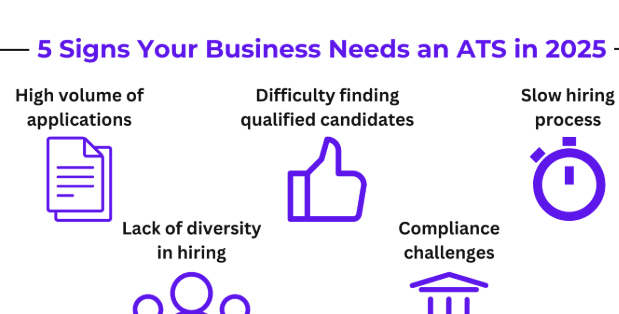
Generic ATS platforms were built for corporate recruiting and don't account for the hourly hiring volume, rapid turnover cycles, or shift-based scheduling complexity that restaurants require from specialized hospitality hiring software. Restaurant-specific ATS solutions include pre-built templates for server, chef, bartender, and kitchen staff roles, complete with hospitality-relevant screening criteria.
General platforms force restaurant managers to sit at computers, while hospitality-focused restaurant applicant tracking systems provide mobile apps, recognizing that managers are constantly on the move. Restaurant ATS platforms include job board integrations specifically optimized for hospitality talent pools, unlike generalist systems that use corporate job boards.
Hospitality-specific systems include shift-based filtering and scheduling connectors through streamlined hiring software, allowing restaurants to immediately assign new hires to open shifts without additional process steps. Food service ATS solutions often include WOTC (Work Opportunity Tax Credit) screening, helping restaurants qualify for tax incentives on hires they'd make anyway.
3. Benefits of ATS for Restaurants and Food Service Businesses
Faster Hiring During Peak Hours with Quick Hire Restaurant Solutions
Automation in application screening and interview scheduling through fast hiring software compresses multi-week hiring timelines into a matter of days, allowing restaurants to fill urgent needs before operational disruption occurs. Instant candidate notifications and mobile-optimized application completion reduce application abandonment rates dramatically, ensuring restaurants capture high-intent candidates through restaurant staff hiring technology.
Auto-scheduling eliminates the back-and-forth that extends hiring cycles, with candidates selecting available interview times directly from the hospitality recruitment tool rather than coordinating through email chains. One-click job posting across multiple boards simultaneously through the best applicant tracking system for restaurants multiplies applicant volume without multiplying management effort, expanding candidate pools faster.
Smart filtering automatically prioritizes candidates matching specified criteria through restaurant recruitment software with scheduling, ensuring hiring managers see the strongest fits first rather than wading through unsuitable applications. Interview self-scheduling reduces manager involvement to review and evaluation only, cutting administrative time typically consumed by scheduling coordination in traditional restaurant hiring and staffing processes.
Reduced Staff Shortages Through Restaurant Staffing Software
By dramatically decreasing time-to-hire, ATS for restaurant managers and hiring ensures restaurants can fill vacancies before they cascade into operational problems affecting customer experience. Continuous application capture through integrated job boards keeps a steady stream of potential candidates flowing in, preventing the acute staff shortage situations that catch restaurants unprepared.
Better candidate-to-role matching through restaurant ATS software with video interview capabilities improves initial hire quality, reducing early departures driven by poor cultural or role fit. Retention improves when candidates have positive hiring experiences marked by quick responses, clear communication, and professional treatment through top hiring software for faster staff recruitment.
Multi-location visibility through an applicant tracking system for small restaurants allows restaurants to redistribute talent or identify emerging staffing patterns before they become critical shortages. Predictive analytics built into a modern restaurant recruitment platform with AI screening can forecast hiring needs based on seasonal patterns, allowing proactive recruitment before positions become urgent.
Improved Communication with Applicants
Consistent, timely candidate communication throughout the hiring process through restaurant hiring software with mobile access creates positive perceptions of the restaurant brand, even among candidates who don't receive offers. Automated status updates keep candidates informed at every stage, reducing anxiety and increasing the likelihood they'll maintain interest through the process.
SMS and WhatsApp integration meets candidates where they are through the best ATS for high-volume restaurant hiring, rather than requiring them to check email or portal accounts. Conversational chatbots available around the clock answer candidate questions immediately, addressing concerns before they lead to application abandonment.
Multi-language support ensures communication accessibility for diverse candidate pools through restaurant hiring software with employee referrals, particularly important in markets with significant immigrant workforces. Transparent hiring timelines and clear next steps demonstrate professionalism, distinguishing restaurants from competitors using sporadic or unclear communication.
Better Compliance and Documentation
Automated documentation through the best restaurant hiring platform for compliance ensures no critical hiring steps are skipped, reducing legal liability from improper hiring procedures. Centralized record-keeping creates audit trails proving fair and consistent application of hiring criteria across all applicants through restaurant recruitment software with analytics.
Built-in compliance workflows guide managers through required steps: consent collection, adverse action processes, and data handling protocols in the best candidate screening software for restaurants. Background check integration ensures a seamless connection between application systems and screening providers, maintaining compliance with Fair Credit Reporting Act requirements.
Data security features protect sensitive candidate information from unauthorized access through the restaurant hiring platform with onboarding, reducing privacy breach risks. Retention policies automatically maintain records for legally required periods, reducing confusion about document management obligations.
4. Top Features Restaurants Should Look for in an ATS
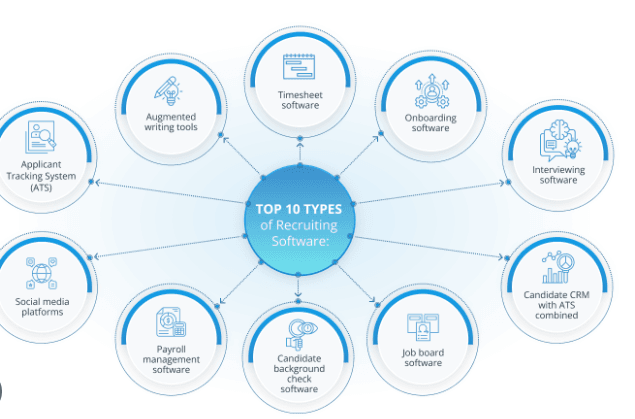
Automated Resume Screening for Chefs, Servers & Kitchen Staff
Keyword-based screening through how to use ATS for restaurant hiring identifies candidates with specific culinary training, food safety certifications, or hospitality experience without requiring manual resume review. Role-specific criteria matching ensures that chef applications highlight recipe creation and culinary training, while server resumes surface customer service and POS system experience.
Skill identification goes beyond job titles to recognize transferable hospitality skills through restaurant ATS with job board integration—multitasking ability from retail, customer service orientation from food delivery, and cultural knowledge from international backgrounds. Customizable scoring assigns higher priority to must-have qualifications, allowing restaurants to automatically surface candidates meeting critical requirements.
Pre-employment assessments designed for hospitality roles through the best software for restaurant staff recruitment evaluate soft skills, including decision-making under pressure, guest satisfaction prioritization, and team dynamics fit. Historical performance data analysis identifies which screening criteria correlate with successful long-term hires, allowing restaurants to refine their selection parameters over time.
Multi-Location Hiring Management
Centralized candidate pool through ATS software for multi-unit restaurants allows talent identified at one location to be considered for similar positions elsewhere, reducing duplicate hiring efforts. Hierarchical access ensures regional managers see hiring across multiple locations while individual store managers focus on their specific needs through restaurant hiring tools for quick staff replacement.
Consolidated reporting shows hiring metrics across the entire organization through the restaurant staff recruitment platform, identifying underperforming locations or revealing successful practices worth replicating. Location-based job posting routes candidates to openings near them through how to post restaurant jobs faster, reducing application friction when restaurants operate in multiple markets.
Talent transfer workflows allow restaurants to move applications between locations when candidates prefer different geographic areas through restaurant ATS with bulk hiring features, maximizing value from every application. Multi-location compliance tracking ensures all locations follow standardized hiring procedures, reducing legal and regulatory risks.
Mobile-Friendly Job Applications
Smartphone-optimized application flows that candidates complete in minutes rather than hours through free restaurant applicant tracking system options dramatically improve completion rates and reduce abandonment. Single-page application design eliminates multiple-step processes that frustrate mobile users and prompt them to seek employment elsewhere.
Photo upload capability allows candidates to submit visual profiles through affordable restaurant recruitment software, helping servers and customer-facing staff stand out to hiring managers. Progress indicators show candidates their application completion status, encouraging them to finish if interrupted.
Autofill features pre-populate fields from phone contacts or previous applications, how to streamline restaurant recruitment, dramatically speeding completion for repeat applicants. Voice-to-text input options accommodate candidates with varying comfort levels with traditional typing, expanding your candidate pool.
Shift-Based Candidate Filtering
Availability matching through restaurant recruitment software with scheduling ensures selected candidates can actually work the shifts the restaurant needs to fill, reducing scheduling conflicts. Part-time versus full-time filters help restaurants find candidates seeking their specific employment type, reducing mismatches.
Split-shift preferences allow chefs and kitchen staff seeking specific work patterns to be matched appropriately through restaurant staffing software with scheduling, improving retention for time-sensitive workers. Seasonal availability tracking helps restaurants identify candidates interested in temporary or holiday-specific work, enabling rapid seasonal hiring.
Geographic radius filtering surfaces candidates living near the restaurant location through the best hospitality hiring software 2025, reducing commute-related no-shows and improving attendance. Transportation and schedule coordination filters help restaurants understand candidate constraints affecting their reliability for early morning or late evening shifts.
AI-Powered Candidate Matching
Behavioral pattern analysis goes beyond resume keywords to identify personality traits and decision-making patterns predicting success in fast-paced hospitality environments through the top hospitality hiring software 2025. Cultural fit assessment predicts how well candidates will thrive in your specific team environment, reducing turnover from poor workplace integration.
Predictive success scoring identifies candidates likely to remain employed long-term through how to reduce turnover with restaurant ATS, not just those who look good on paper. Soft skills evaluation assesses communication style, problem-solving approach, and guest-focused orientation through gamified assessments simulating real hospitality scenarios.
Transferable skills recognition identifies hidden potential in candidates from different industries who possess relevant hospitality competencies through ATS for fine dining restaurants. Machine learning improvement means matching gets more accurate as the restaurant recruitment platform with AI screening analyzes your successful hires, creating increasingly targeted candidate recommendations.
Built-In Onboarding Tools
Digital form collection eliminates paper-based paperwork that gets lost or slows the start date process through the restaurant hiring platform with onboarding. Role-specific onboarding paths ensure new hires receive training relevant to their position, whether they're kitchen staff, servers, or management.
Training module integration connects recruitment to learning management through the best hospitality talent acquisition software, allowing candidates to begin training before their first scheduled shift. Compliance checklist automation ensures all legal requirements are completed, including tax documentation, background clearances, and certification verification.
Progress tracking shows managers which new employees have completed essential training and are ready for independent work through restaurant staffing solutions for fast hiring. Document automation generates required employment agreements, confidentiality forms, and role-specific policies without manual preparation.
5. Top Hiring Challenges Restaurants Face Without ATS
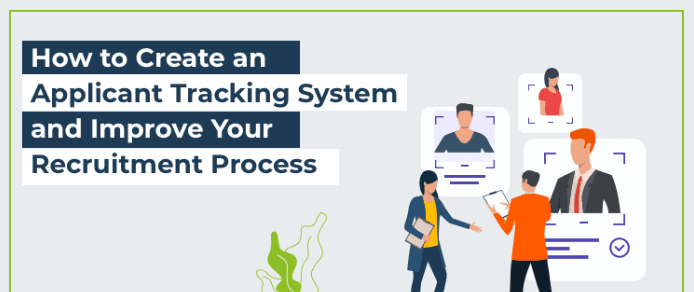
High Employee Turnover Rates
Without data-driven candidate matching from hospitality talent hiring software, restaurants hire based on availability rather than fit, resulting in quick departures when job reality doesn't match candidate expectations. Manual hiring processes lack touchpoints for understanding candidate priorities and concerns, missing opportunities to address issues driving retention problems.
Slow hiring timelines mean candidates accept competing offers, forcing restaurants to repeatedly re-advertise the same positions without restaurant employment management system support. Poor onboarding experiences stemming from disorganized hiring create negative first impressions that contribute to early departures.
Lack of communication after hiring leaves new employees uncertain about start times, expectations, or training through food service recruitment solutions, creating friction before they arrive. Unable to identify patterns, restaurants repeat hiring mistakes rather than learning from turnover data.
Slow Hiring Processes
Email-based recruiting creates communication delays where messages get buried in crowded inboxes or go unanswered for days without quick-hire restaurant software. Manual resume screening means qualified candidates move through a single bottleneck, preventing parallel evaluation.
Interview scheduling coordination through calendar exchanges and phone calls extends timelines by hours or days without restaurant personnel management system automation. Lack of integration between recruiting and scheduling means new hires can't see their first shifts, delaying their ability to confirm commitment.
Paper-based onboarding requires in-person meetings to collect documents through hospitality workforce recruitment tool platforms, pushing start dates back and creating operational friction. Decision paralysis from managing applications across email, spreadsheets, and casual conversations prevents clear hiring progress.
Manual Resume Sorting
Time-consuming resume review pulls managers away from operational responsibilities through restaurant job management software, costing money and distracting them from core business. Inconsistent evaluation of resumes means candidates aren't assessed against the same criteria, introducing bias and poor hiring decisions.
Duplicate effort reviewing similar applications from multiple candidates wastes time without adding value through talent acquisition for restaurant systems. Difficulty identifying candidates with relevant hospitality experience buried in generic resumes means qualified talent gets overlooked.
Loss of resume organization means applications get misplaced through the restaurant hiring automation platform, causing candidates to believe they're being ignored. Inability to search historical applications means restaurants can't easily find previously-screened candidates for new openings.
Poor Candidate Experience
Complex application processes frustrate candidates, particularly younger workers expecting mobile-first, consumer-like experiences from hospitality job posting software. Delayed communication leaves candidates uncertain whether the restaurant is interested, prompting them to pursue other opportunities.
Lack of transparency about hiring timeline and process creates candidate anxiety and reduces interest in positions without restaurant candidate management system support. One-way communication without feedback keeps candidates in the dark about their status or reasons for rejection.
Inflexible scheduling requirements that don't account for candidate constraints create a perception of an inflexible employer through staff acquisition software for restaurants. No interview flexibility forces candidates into predetermined time slots, preventing qualified candidates from participating.
6. Top 10 Restaurant Applicant Tracking Systems for Faster Recruitment
Why Restaurant Hiring Demands a Specialized ATS
Restaurants face a hiring paradox: high turnover, tight budgets, and urgent staffing gaps demand faster solutions than traditional HR tools provide through hospitality hiring automation. Modern restaurant recruiting software platform solutions reduce time-to-hire by 30-50%, cut administrative burden by 60%, and improve staff retention by 25-35%—making specialized workforce management for restaurants platforms non-negotiable for competitive operators.
Generic hiring software fails restaurants because it's built for desk jobs, not shift-based operations through restaurant employment software. A purpose-built hospitality applicant management system automates high-volume screening, integrates with job boards, enables mobile applications, and provides visibility across multiple locations—turning chaos into predictable, scalable hiring.
1. Pitch N Hire ⭐ 4.5/5
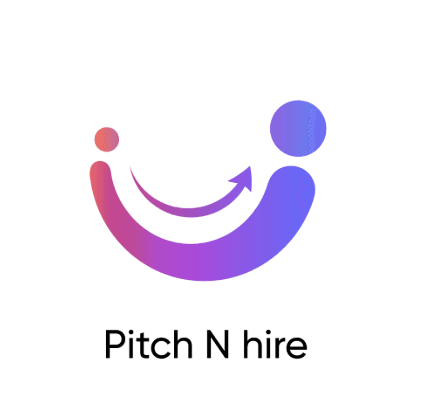
The Next-Generation AI Champion for SMB Restaurants
Expert Review
Pitch N Hire emerges as the transparent alternative to enterprise incumbents, delivering next-generation AI-powered fast recruitment software for restaurants designed specifically for startups and small-to-mid restaurant groups seeking agility without complexity. Its promise—"cut time-to-hire by 40% and costs by 50%"—resonates with operators tired of juggling multiple disconnected tools through a restaurant hiring solution for efficiency. The platform transforms ATS from passive storage into an active, intelligent hiring partner through advanced candidate scoring and interview automation.
Unique Features That Drive Results
AI automatically ranks candidates against job descriptions through hospitality recruitment automation, eliminating hours of manual screening. Branded career pages with full customization build employer identity through a restaurant talent acquisition platform. The all-in-one platform combines ATS + assessments + sourcing, reducing tool switching and training overhead. Multi-job board integration (Indeed, Glassdoor, LinkedIn) amplifies reach without extra clicks.
Pros
Pay-as-you-go pricing works perfectly for restaurants with fluctuating seasonal hiring through streamlined recruitment for restaurants. The intuitive interface gets teams productive immediately—no complex configuration needed, through restaurant hiring made easy. Customer support consistently receives praise for responsiveness and helpfulness. Complete pipeline tracking and CRM features nurture talent pools for future roles.
Cons
As a newer player, Pitch N Hire lacks the brand recognition of legacy incumbents like Workable through hospitality staff management software. Limited deep HRIS integrations mean it works best as a standalone ATS, not a full HR suite. Niche focus delivers restaurant hiring power but may lack enterprise-grade features for complex multi-location operations.
Pricing Model
Transparent, flexible pricing starting at $99/month with monthly or annual billing—no surprise fees through the best recruitment tool for restaurants. Month-to-month flexibility suits restaurants evaluating multiple platforms.
Case Study: Mid-Size Restaurant Group Success
A 50-person restaurant group reduced time-to-hire from 21 days to 8 days using Pitch N Hire's AI screening through restaurant hiring optimization software. Recruitment costs dropped 35% while candidate quality scores improved. Managers reported spending 10 hours/week less on resume screening, redirecting effort toward strategic hiring decisions.
2. StaffedUp ⭐ 4.7/5

The Restaurant-First ATS Built by People Who Worked Shifts
Expert Review
Purpose-built for high-turnover, multi-location restaurant environments, StaffedUp delivers the simplicity restaurants actually need through automated applicant tracking for hospitality. Unlike generic platforms, every feature maps to restaurant workflows—one-click job posting, mobile-first applications, and WOTC tax credit screening through the restaurant staffing recruitment tool. Trusted by 100+ regional operators, it's engineered by people who've managed shifts, not just software engineers.
Unique Features That Drive Results
One-click posting reaches 50+ job boards simultaneously without manual cross-posting through recruitment software for restaurants. Pre-screening questions filter applicants before applications reach managers through restaurant hiring software. Auto-tagging organizes candidates by role and location, enabling fast sorting. Bulk messaging keeps applicants engaged without fragmented email threads. WOTC screening identifies tax-eligible candidates, improving hiring ROI.
Pros
8x increase in applicants without posting to additional job boards—efficiency gains are immediate through the restaurant recruitment platform. Hiring moves 77% faster across all locations through automation and centralized dashboards. A 45% reduction in hourly turnover means lower replacement costs and stronger team stability through staff recruitment software. Mobile-friendly applications increase completion rates among hourly job seekers.
Cons
Pricing requires custom quotes (not transparently listed), making budget planning difficult for smaller operators through the restaurant applicant tracking system. HRIS and payroll integration is limited compared to all-in-one suites. Best suited for mid-size operators with 5-50 locations; smaller single-unit restaurants may find it oversized.
Pricing Model
Custom quote-based through the restaurant hiring tool. Industry estimates: $199-499/month for small-to-mid restaurants. 30-day free trial available.
Case Study: Multi-Location Turnaround
Bailey's Restaurants (10 locations) struggled with slow hiring, no-shows, and fragmented manager communication. After switching from Indeed/TalentReef, they cut interview no-shows by 60%, improved time-to-hire by 42%, and increased retention by 35% through restaurant staffing software. Managers gained autonomy while HR maintained visibility—solving the multi-location coordination challenge.
3. Workable ⭐ 4.4/5
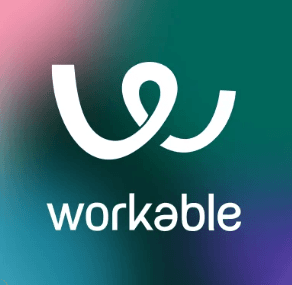
The Industry Standard for Global Restaurant Chains
Expert Review
Workable dominates the mid-market restaurant hiring space with transparent pricing, powerful AI sourcing, and compliance automation built for high-volume operations through a restaurant hiring platform. With a 4.4/5 Capterra rating and thousands of hospitality customers, it's proven across 100+ restaurant chains, managing hundreds of hires monthly through food service recruitment software.
Unique Features That Drive Results
AI-powered resume parsing automatically extracts key information and ranks candidates through quick service restaurant hiring. Structured interviews with pre-scoring templates eliminate subjective bias. Mobile-first application process reduces drop-offs through QSR recruitment software. Real-time job sync with 500+ boards maintains active postings. Built-in compliance reporting ensures EEO and legal protection.
Pros
Responsive customer support resolves issues rapidly—critical for time-sensitive hiring through a restaurant staffing solution. Highly configurable workflows adapt to complex restaurant hiring with multiple roles and locations through restaurant job posting software. High-volume multi-location operators praise its ability to manage 50+ simultaneous hires. Continuous feature updates keep the platform competitive and modern.
Cons
Pricing scales aggressively with team size—larger restaurant groups face $800-1200/month bills through hospitality hiring software. Some automations require manual template setup, increasing configuration time. The people/HR admin module needs further development for full HRIS functionality.
Pricing Model
Standard plan: $299/month. Premier plan: $599/month (annual billing). 15-day free trial through restaurant talent management. Scales with team size and hiring volume.
Case Study: 15-Location Restaurant Chain
Reduced applications per hire by 40% through AI candidate matching, improved the quality of hires, and decreased onboarding time from 14 days to 5 days through restaurant HR software. Centralized dashboards gave corporate visibility while local managers maintained hiring autonomy.
4. Greenhouse ⭐ 4.2/5
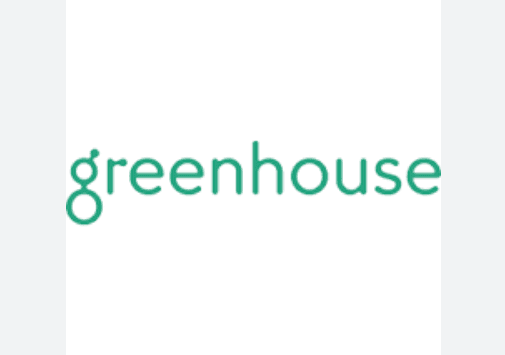
The Premium Choice for Professional Hospitality Groups
Expert Review
Greenhouse represents the gold standard for mid-to-large hospitality enterprises prioritizing structured hiring, candidate experience, and data-driven decisions through a staff management system restaurant. With industry-leading implementation support and 500+ enterprise customers, it's the fastest-growing ATS among professional hospitality groups.
Unique Features That Drive Results
Structured interview guides and candidate scorecards reduce hiring bias and ensure consistent evaluation through restaurant employee management. Advanced reporting and predictive analytics reveal hiring process bottlenecks. Custom career pages with employer branding attract culture-fit candidates through restaurant workforce management. Diversity & Inclusion reporting tools support equitable hiring. Seamless integrations with major HRIS and payroll systems.
Pros
Superior candidate experience through branded, intuitive career pages increases application quality through restaurant application tracking. Data-driven hiring approach reduces bias and improves first-year retention. Exceptional implementation support and training accelerate time-to-value through restaurant online recruitment. Industry leader status means integrations and feature development will remain competitive.
Cons
Pricing is NOT publicly disclosed—the sales process takes weeks, making comparison difficult through a digital recruitment restaurant. An estimated $6,500-$30,000+ annually represents a significant investment for SMBs. A complex feature set can overwhelm smaller restaurant teams without dedicated HR staff.
Pricing Model
Custom pricing is negotiated through the sales team through restaurant hiring automation. Estimates: $6,500-$8,000 annually for small teams (1-10 employees), scaling to $20,000-$30,000+ for mid-market. Annual contracts standard.
Case Study: Upscale Hotel Group Transformation
Reduced time-to-hire by 28%, improved diversity hire rate from 12% to 31%, and boosted first-year retention by 22% using Greenhouse's structured hiring approach through restaurant recruitment automation. Investment paid back within 6 months through reduced turnover costs.
5. iCIMS ⭐ 4.1/5
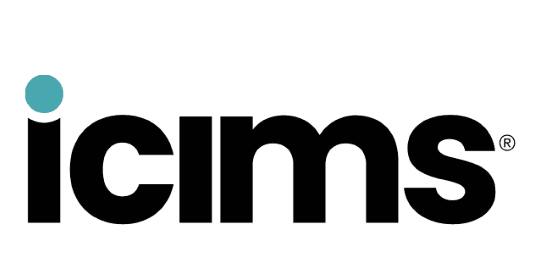
Enterprise-Scale ATS for Global Restaurant Chains
Expert Review
iCIMS powers Fortune 500 hospitality groups and international hotel chains, managing 1000+ hires annually across multiple countries through the best recruitment software for restaurants. Its customizable workflows, global capabilities, and talent pool management make it the choice for operators requiring enterprise-grade complexity with international reach.
Unique Features That Drive Results
50+ language support enables truly global hiring across different regions and regulations through recruitment software for fast casual restaurants. Advanced talent pool management reduces future hiring cycles. Social media integration (Facebook Jobs, LinkedIn) expands candidate reach through restaurant hiring software with applicant tracking. Customizable workflows and compliance frameworks adapt to each location's unique requirements. Advanced reporting with predictive analytics guides strategic decisions.
Pros
Exceptional scalability handles massive hiring volume without performance degradation through affordable recruitment software for restaurants. Global capabilities accommodate multi-country hiring with localized compliance. Deep talent pool building reduces hiring time for recurring positions through a cloud-based recruitment platform for restaurants. Mobile-first candidate experience appeals to hospitality workers applying via phones.
Cons
Quote-based pricing creates budget uncertainty—estimated $5,000-$20,000+ annually, depending on volume and module, through restaurant recruitment software for high-volume hiring. Implementation requires dedicated IT resources and change management support. Steeper learning curve for smaller restaurant operators; better suited to large HR teams.
Pricing Model
Quote-based (not published) through recruitment software for restaurant chains. Industry estimates suggest $5,000-$20,000+ annually, depending on hiring volume, locations, and modules. Implementation and configuration fees apply.
Case Study: International Hotel Chain Coordination
Managing 40+ locations reduced application-to-hire time from 35 days to 12 days, standardized hiring processes across regions, and improved compliance documentation by 85% through restaurant hiring software for multiple locations. Proactive talent pool management filled 70% of seasonal positions before applications opened.
6. Ashby ⭐ 4.3/5
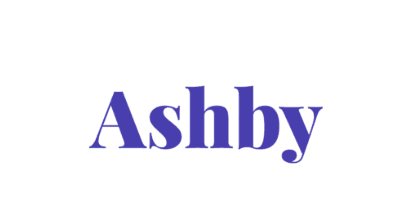
Data-Obsessed ATS for Analytics-Driven Restaurant Groups
Expert Review
Ashby represents the modern approach to ATS design—data obsession meets elegant interface through a recruitment platform for quick service restaurants. Ideal for growth-stage hospitality tech companies and ambitious restaurant groups seeking cutting-edge analytics, sophisticated customization, and real-time hiring velocity tracking. Category leader in analytics and data visualization.
Unique Features That Drive Results
Sophisticated analytics dashboards provide real-time hiring pipeline visibility through a restaurant applicant tracking system for small businesses. AI-powered candidate matching engine ranks applicants intelligently. Flexible hiring workflow customization adapts to unique restaurant processes through recruitment software to hire restaurant managers. An advanced integration ecosystem (Slack, Zoom, Salesforce) eliminates data silos. Visual heat maps reveal hiring bottlenecks instantly.
Pros
Best-in-class analytics provide actionable insights that competitors can't match through the best software to hire line cooks. Highly customizable workflows map to specific restaurant hiring sequences. Intuitive interface delivers a strong user experience with minimal training through a recruitment platform to hire restaurant servers. Excellent integration library connects all critical tools in one view.
Cons
Pricing structure ($800/elevated seat annually) escalates quickly as teams grow—a 30-person hiring team costs $24,000/year through restaurant hiring software with video interviews. Better suited for mid-size operators; very small restaurants find it oversized. Less focus on industry-specific features compared to restaurant-native solutions.
Pricing Model
$800 per "elevated seat" annually (includes hiring managers, not just admins) through recruitment software for restaurant franchises. Minimum commitment required, though month-to-month flexibility available.
Case Study: Fast-Growing Restaurant Tech Company
Scaled from 10 to 150 employees. Achieved 33% faster hiring velocity, 40% reduction in time-to-productivity, and improved hiring manager satisfaction through analytics-driven insights via restaurant job posting software with a free trial. Hiring dashboard identified that 60% of drop-offs occurred at the screening stage, enabling process optimization.
7. JazzHR ⭐ 4.0/5

The Affordability Champion for Small-to-Mid Restaurants
Expert Review
JazzHR proves restaurant hiring doesn't require enterprise pricing through recruitment software for independent restaurants. With transparent, tiered plans, unlimited users, and comprehensive features at SMB price points, it's the value leader for independent restaurants and small multi-location operators seeking straightforward hiring solutions without complexity.
Unique Features That Drive Results
Simple, intuitive interface requires zero technical knowledge—managers are productive immediately through the restaurant hiring platform with a mobile app. Unlimited jobs and users in Plus/Pro plans (no per-user licensing costs). Custom hiring workflows and interview guides adapt to restaurant roles through recruitment software to reduce restaurant turnover. Bulk candidate actions and communications streamline outreach. Job board syndication reaches Indeed, ZipRecruiter, and niche hospitality boards.
Pros
Exceptionally affordable entry ($75/month Hero plan) makes it accessible to single-unit restaurants through an applicant tracking system for restaurant hourly workers. Unlimited users across all plans—entire teams use the platform without extra licensing. A 14-day free trial with no credit card required removes evaluation risk through restaurant recruitment software with scheduling. Transparent pricing model (no surprise add-ons) enables confident budgeting.
Cons
Advanced features (eSignatures, SMS, Zoom integration) carry separate fees ($29-59 each) through hiring software for restaurant prep cooks. Some users report higher total costs after adding add-ons. Reports of subscription cancellation difficulties suggest checking terms carefully.
Pricing Model
Hero: $75/month (annual billing). Plus: $269/month. Pro: $420/month through a recruitment platform for restaurant chefs. Add-ons: eSignatures ($59), SMS texting ($39), Zoom integration ($29), and advanced reporting ($59).
Case Study: Five-Location Independent Group
Improved hiring consistency across locations, reduced administrative burden by 50%, and saved $200/month by consolidating from multiple job boards through restaurant staff recruitment software for free. Managers appreciated unlimited user access—trainers could onboard new staff without licensing concerns.
8. Lever ⭐ 4.4/5

Premium Mid-Market ATS with Exceptional Implementation
Expert Review
Lever powers Netflix, Atlassian, KPMG, and innovative hospitality brands seeking premium candidate engagement, powerful CRM, and exceptional implementation support through recruitment software for the restaurant corporate office. With 4.4+ ratings across platforms, it delivers mid-market sophistication without enterprise overhead.
Unique Features That Drive Results
AI-powered candidate matching and interview summaries accelerate decision-making through an applicant tracking system for the food service industry. Built-in CRM nurtures talent pipelines long-term, not just for open roles. Comprehensive reporting with custom analytics reveals hiring effectiveness through restaurant recruitment software with analytics. Seamless integrations with LinkedIn RSC, Slack, Zoom, and major HRIS platforms. Applicant self-scheduling reduces coordination overhead.
Pros
Exceptional customer support and implementation team accelerate time-to-value through a hiring platform for restaurant front-of-house. Powerful talent CRM builds proactive pipelines, reducing future hiring urgency. Strong AI capabilities deliver faster hiring decisions with better candidate matches through recruitment software for a restaurant's back of house. Flexible scaling accommodates growing restaurant groups naturally.
Cons
Pricing not publicly disclosed—requires custom sales quotes and negotiations through the applicant tracking system for casual dining restaurants. An estimated $6-8 per employee per month ($8,000-$25,000+ annually for mid-market) aligns with premium positioning. Less focus on industry-specific hospitality features compared to specialized solutions.
Pricing Model
Custom pricing (~$6-8 PEPM) through recruitment software to hire faster for restaurants. No published rates. Typically $8,000-$25,000+ annually for mid-market restaurant groups. Sales negotiation required.
Case Study: Boutique Hotel Group
Improved candidate experience score by 45%, reduced time-to-hire by 38%, and built a proactive talent pipeline resulting in 60% faster filling of seasonal positions through the best applicant tracking system for QSR. Talent CRM enabled targeted outreach during peak season, reducing hiring panic.
9. Applicantz ⭐ 4.9/5
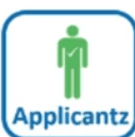
AI-Powered Restaurant-Native ATS Engineered for Hospitality
Expert Review
Applicantz earns an exceptional 4.9/5 rating from 2,800+ reviews because it's built specifically for restaurant operators through restaurant hiring software with background checks. With 1,000+ restaurants using the platform, it combines high-volume screening automation, predictive analytics, and industry-specific job board reach that generalist platforms can't match.
Unique Features That Drive Results
AI automatically screens and ranks resumes against job requirements, eliminating manual filtering through a recruitment solution for seasonal restaurant staff. Screening filters with advanced automation enable operators to set criteria once and filter hundreds of candidates instantly. Posts to 50+ restaurant-specific job boards (Restaurant Careers, Good Food Jobs, Culinary Agents), reaching targeted hospitality talent through a restaurant recruitment platform with candidate screening. Predictive analytics track which sources, job boards, and screening criteria yield the best hires.
Pros
Exceptional user satisfaction (4.9/5 rating) reflects product-market fit with restaurant operators through hiring software for food and beverage management. Highly specialized features for hospitality eliminate generic ATS compromises. Powerful predictive analytics optimize recruitment ROI month-over-month through recruitment software for restaurant assistant managers. Mobile-first design appeals to hourly job seekers applying via phones.
Cons
Niche focus delivers restaurant-specific power but limits general industry features through an applicant tracking system for multi-location restaurants. HRIS and payroll integrations lag behind enterprise platforms. Pricing details are not fully transparent online, requiring direct contact for quotes.
Pricing Model
Freemium: 14-day free trial with no credit card through restaurant recruitment software with integration. Paid plans are estimated $149-299/month, depending on hiring volume. Custom enterprise quotes available for large chains.
Case Study: 1,000+ Restaurant Success
One 20-location operator saw a 3x application increase, a 40% faster time-to-hire, reduced manual screening by 60%, and improved hiring ROI by 45% through a hiring platform for restaurant dishwashers. Predictive analytics identified that video interview questions reduced drop-offs by 35%.
10. Bullhorn ⭐ 4.0/5

Staffing Firm ATS for High-Volume Hospitality Recruitment
Expert Review
Bullhorn powers 1,000+ staffing and hospitality recruitment firms managing high-volume placements through recruitment software for restaurant bartenders. With advanced candidate and company management, AI automation, and powerful CRM features, it's engineered for recruitment agencies and multi-location operators prioritizing recruiter efficiency.
Unique Features That Drive Results
AI Assistant automates routine tasks—scheduling, candidate outreach, follow-ups—freeing recruiters for relationship-building through restaurant job board software for hiring. Advanced candidate and company management enable deep CRM functionality. Email integration tracks all candidate communication automatically through the applicant tracking system to streamline restaurant hiring. LinkedIn integration pulls real-time updates on candidate profiles. Pulse Relationship Intelligence identifies engagement signals.
Pros
Excellent for staffing firms and high-volume recruitment operations through a recruitment platform for restaurant training. User-friendly interface minimizes training time for recruiting teams. Cutting-edge technology with a partner-first approach creates collaborative relationships through hiring software for restaurant hostesses. Advanced CRM capabilities nurture candidate relationships long-term.
Cons
Pricing is not transparently listed; it requires a sales quote through recruitment software for fine dining restaurants. An estimated $110-315/user/month can be expensive for smaller teams. No free trial offered, creating a barrier to testing and evaluation.
Pricing Model
Ranges $110-$315/user/month depending on plan tier (ATS, Corporate, Enterprise Plus) through the applicant tracking system for casual dining. Exact pricing requires a custom sales quote. Implementation fees apply for complex configurations.
Case Study: Hospitality Staffing Firm Growth
Improved placement rates by 43%, reduced recruiter administrative time by 50%, and scaled client base by 35% using Bullhorn's automation and CRM capabilities through restaurant recruitment software with referrals. Recruiters spent 80% more time on placements, 20% less on administrative tasks.
Best ATS for Small Restaurants vs. Large Chains
Small restaurants benefit most from ATS platforms emphasizing ease of use, minimal setup complexity, and affordable pricing that doesn't require enterprise IT resources through a hiring platform to reduce time to hire restaurants. A simple interface allows a single manager to operate the system without training. Integrated scheduling prevents the need for additional software purchases through recruitment software for a restaurant's sous chef. Mobile focus meets small business needs where owner-operators manage hiring on the go.
Large restaurant groups prioritize ATS platforms offering sophisticated reporting, multiple location management, and integration with enterprise systems through an applicant tracking system for restaurant kitchen staff. Multi-level access controls allow regional managers visibility without overwhelming individual location managers. Comprehensive analytics reveal hiring patterns, performance metrics, and improvement opportunities across dozens or hundreds of locations through hiring software for restaurant office staff. Enterprise integrations connect to corporate payroll systems, HR platforms, and learning management for seamless data flow. Dedicated account management and customer success teams support complex implementations.
7. How ATS Helps Restaurants Hire Chefs, Kitchen Staff & Front-of-House Roles
Automated Role-Based Filtering
Chef applications highlight culinary training, cuisine expertise, and food safety certifications automatically extracted through role-specific screening via a recruitment platform with job distribution to restaurants. Kitchen staff filtering emphasizes food handling competencies, speed, and safety protocol adherence, matching prep cook and line cook position requirements through staff hiring for restaurants.
Server applications surface customer service experience, communication skills, and POS system familiarity, most relevant to front-of-house roles through applicant tracking system restaurants. Bartender filtering identifies cocktail knowledge, speed, and customer engagement capabilities specific to bar management. Host/hostess screening highlights guest interaction skills, communication clarity, and organizational abilities required for first-contact positions through hiring restaurant staff online.
Management candidate filtering emphasizes leadership experience, P&L responsibility, and team-building capabilities for supervisory roles through restaurant staffing solutions.
Pre-Screening Templates for Hospitality Roles
Role-specific questionnaires ask candidates context-appropriate questions—chefs about knife skills and food safety, servers about peak service experience through a restaurant recruitment platform. Behavioral questions assess how candidates handle real hospitality scenarios—managing difficult guests, juggling multiple tasks, and maintaining quality under pressure.
Availability inquiries surface scheduling flexibility and candidate understanding of hospitality's irregular hours before interviews consume manager time through a restaurant hiring platform. Certification verification ensures candidates possess required licenses—food handler permits, alcohol service certifications, or CPR training through a restaurant job posting platform.
Previous hospitality experience questions quickly separate industry veterans from career-changers, informing interview focus through restaurant talent acquisition software. Cultural fit assessment probes values alignment, teamwork orientation, and enthusiasm for hospitality work before wasting interview time.
Scheduling Interviews with Fewer Delays
Candidate self-service scheduling eliminates back-and-forth coordination, with applicants selecting available interview times directly through restaurant staff acquisition software. Automated reminders reduce no-shows through SMS notifications before scheduled interviews via the restaurant hiring management system.
Time zone handling allows restaurants with multiple locations to coordinate interviews across geographic distances through restaurant recruitment management. Interviewer calendar integration prevents double-booking and ensures manager availability at confirmed times. Mobile app notifications alert managers to confirmed interviews so they don't get buried in calendars through restaurant staff management software. Interview type routing directs candidates to the appropriate interview format—phone screening, in-person, or video-based on role.
8. Case Studies: How Restaurants Improved Hiring Speed Using ATS
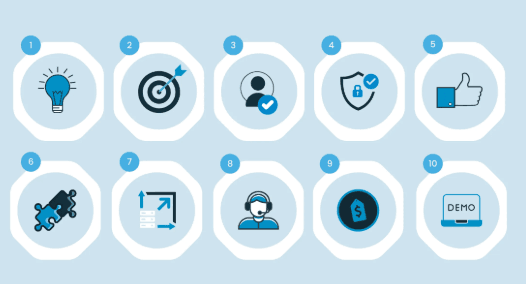
Case Study 1: Fast-Food Chain Improving Hiring Turnover
A multi-unit quick-service restaurant facing constant staffing challenges implemented an ATS to centralize hiring across numerous locations through restaurant employment software. The previous approach relied on individual location managers posting jobs independently, creating inconsistent candidate experience and duplicated efforts.
Following implementation, time-to-hire compressed from multi-week timelines to a matter of days through automated screening and interview scheduling via restaurant candidate management. Applicant volume increased dramatically through centralized job board posting without requiring additional job postings per location.
Manager time spent on hiring administration decreased significantly, allowing focus on actual hiring decisions rather than logistics through restaurant application software. Early retention data showed hired candidates staying longer than previously-hired cohorts, suggesting better candidate-role matching.
Case Study 2: Fine-Dining Restaurant Reducing Recruitment Delays
An upscale restaurant group struggling with inconsistent hiring decisions and lengthy candidate evaluation processes implemented a hospitality-specific ATS through a restaurant resume database. The previous system involved email chains, spreadsheets, and informal discussions, resulting in key candidates falling through cracks.
A centralized platform created clear visibility into candidate status for all hiring stakeholders through restaurant candidate screening software. Standardized evaluation criteria reduced subjective decision-making and interview variability across the organization. Interview scheduling automation eliminated days of back-and-forth coordination with candidates through restaurant employee hiring.
Post-implementation results showed improved hiring consistency and better alignment between hired candidates and role requirements through restaurant workforce solutions.
Case Study 3: Café Chain Automating Seasonal Hiring
A café concept with significant seasonal fluctuation implemented an ATS to manage rapid hiring surges without chaos through a restaurant talent management system. Seasonal demand forecasting integrated with recruiting, allowing proactive outreach to rehire previous seasonal workers before peak periods.
Previous seasonal hiring relied on emergency recruiting during peak times, creating rushed hiring decisions and poor candidate quality through restaurant people management. Following ATS implementation, seasonal hiring moved to a predictive model identifying peak demand months in advance.
Candidate pool from previous seasons could be rapidly recontacted and rehired without repeating the original screening through the restaurant hiring solution. Reduced hiring urgency during peak seasons allowed more thoughtful candidate evaluation and improved seasonal hire quality.
9. Restaurant Onboarding Software: Integrating ATS for Seamless Staff Training
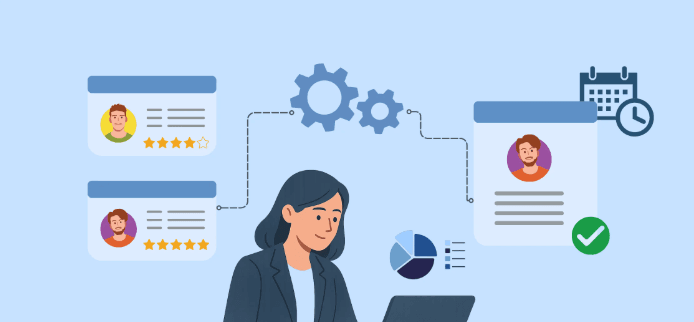
Digital Onboarding for New Hires
Seamless integration from hiring to onboarding means candidates move directly from application acceptance to training initiation without handoffs through the restaurant recruitment tool. Mobile app access allows new hires to complete onboarding tasks on their schedules, accommodating hospitality workers' varied availability.
Interactive training modules replace outdated paper manuals with engaging digital content, including videos, quizzes, and interactive scenarios, through restaurant hiring management. Role-specific learning paths ensure new servers receive different training from kitchen staff, tailoring content to actual job requirements via the restaurant staff tracking system.
Gamification elements, including badges, progress tracking, and leaderboards, increase engagement compared to traditional training through restaurant interview scheduling software. 24/7 access enables new hires to review materials before shifts, during breaks, or in comfortable home environments rather than only during formal training sessions.
Document Collection & Verification
Automated document upload consolidates tax forms, direct deposit information, and emergency contacts in one secure location through restaurant offer management software. Background check integration enables seamless progression from hiring decision through background verification without separate manual steps via the restaurant onboarding platform.
Certification verification confirms food handler permits, alcohol service licenses, or other industry-specific credentials before new hires begin shifts through the restaurant candidate pipeline. Employment eligibility verification through integrated I-9 processing ensures compliance with immigration documentation requirements.
Reference collection and verification happen through the platform rather than untracked phone calls, creating documented proof of due diligence through the restaurant recruitment workflow. Data security ensures sensitive personal information is encrypted and accessed only by authorized personnel, protecting the new hire.
Training Modules & Role-Based Instructions
Menu training modules help servers and kitchen staff learn current offerings, recipes, allergies, and promotional items through interactive learning via restaurant hiring process software. Food safety and handling protocols delivered through mandatory training modules ensure consistent safety practice across all staff.
Customer service excellence training teaches de-escalation, conflict resolution, and guest satisfaction approaches consistent with restaurant values through the restaurant job application tracker. POS system tutorials allow servers to practice transaction entry, modifications, and special requests before working actual shifts.
Kitchen workflow training helps prep cooks and line cooks understand station organization, prep procedures, and quality standards through the restaurant candidate database. Shift start procedures, including opening/closing checklists, equipment startup, and team communication protocols, are documented for consistency.
10. How Restaurant ATS Enhances Candidate Experience

Simple Mobile Application Flow
One-page applications are completable in minutes rather than hours, dramatically increase completion rates, and reduce candidate frustration through a restaurant staffing platform. Mobile-first design ensures applications work seamlessly on smartphones, where most hospitality candidates apply via a restaurant hiring tracker.
Minimal required fields focus on essential information, recognizing that extensive application requirements deter hourly worker applicants through the restaurant recruitment management system. Progress indicators show candidates their completion status, encouraging them to finish if interrupted.
Pre-filled autofill functionality accelerates completion when candidates have previously applied through the restaurant applicant database. Instant confirmation pages confirm application receipt and provide next steps.
Real-Time Job Status Updates
Automated status notifications keep candidates informed as they move through recruiting stages—application received, screening completed, interview scheduled through restaurant candidate tracking. SMS notifications reach candidates through preferred communication channels rather than requiring email checking via the restaurant staff acquisition platform.
Transparent timeline communication explains expected next steps and approximate decision timelines, reducing candidate anxiety through a restaurant hiring automation tool. Prompt rejection communication delivered promptly allows candidates to pursue other opportunities quickly rather than remaining indefinitely uncertain.
Offer acceptance communications and start date confirmations eliminate confusion about hiring outcomes through the restaurant recruitment management tool. Pre-start notifications remind accepted candidates about start times, location details, and what to bring.
Automated Communication & Reminders
Interview reminders sent multiple days in advance reduce no-shows and demonstrate candidate respect through the restaurant staffing network. Start date confirmations the day before employment begins prevent confusion about timing and location via the restaurant talent acquisition platform.
Multi-channel communication through email, SMS, and WhatsApp meets candidates in their preferred communication channels through the restaurant hiring coordination system. Conversational chatbot availability answers candidate questions immediately without waiting for a manager's response.
Language accessibility through multi-language support ensures communication clarity for diverse candidate populations through restaurant recruitment process software. Professional tone and timing demonstrate respect for candidates' time and communication preferences.
11. AI & Automation in Restaurant Hiring Software
AI Recruiter Tools for Talent Matching
Behavioral analysis goes beyond resume keywords to identify personality traits and decision-making patterns predicting hospitality job success through a restaurant staffing tracker. Pattern recognition from successful hires allows AI to identify candidates with similar characteristics, improving match quality over time via a restaurant candidate communication platform.
Soft skills evaluation through gamified assessments reveals problem-solving approach, guest satisfaction prioritization, and teamwork orientation through a restaurant job posting site. Transferable skills recognition identifies candidates from non-hospitality backgrounds whose capabilities transfer effectively to restaurant roles.
Bias reduction through algorithmic evaluation creates more objective hiring compared to human pattern matching influenced by unconscious bias through a restaurant hiring coordinator system. Continuous learning improves matching accuracy as the system analyzes hiring outcomes and refines future recommendations.
Predictive Hiring for Seasonal Demand
Historical sales data analysis allows AI to forecast peak hiring periods months in advance, enabling proactive recruiting before urgent needs arise through a restaurant employment management system. Weather pattern integration predicts seasonal fluctuations beyond historical sales, accounting for temperature changes affecting restaurant traffic via restaurant staff onboarding software.
Event calendar analysis incorporates local holidays, festivals, and special events affecting dining patterns through the restaurant candidate portal. Staffing level optimization determines the exact team size needed for predicted demand levels, preventing both overstaffing and understaffing.
Seasonal worker rehiring automation identifies previous workers available for repeat seasonal employment, reducing recruiting expense for predictable rehires through a restaurant hiring platform. Staff allocation guidance recommends how many kitchen, server, and host staff needed for the predicted demand distribution.
Smart Shift Scheduling Based on Skills
Role-specific scheduling matches staff capabilities to shift requirements—placing the most experienced servers during high-volume periods through restaurant staffing software. Peak-hour optimization concentrates the most capable staff during the busiest service times, improving customer experience and operational efficiency via restaurant recruitment software.
Skill diversity ensures each shift includes balanced team composition with a mix of experienced and developing staff through the applicant tracking system for restaurants. Learning curve accommodation schedules newer staff during slower periods where mistakes have a limited impact.
Preference consideration incorporates staff availability and schedule preferences within operational requirements through restaurant ATS. Predictive optimal scheduling uses demand forecasts to determine ideal team size and skill mix before demand actually materializes.
12. Compliance, Payroll & Staff Management: What ATS Can Do
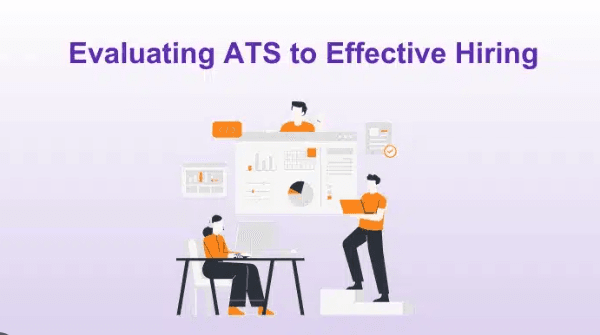
Labor Law Compliance
Fair Credit Reporting Act (FCRA) compliance built into the workflow ensures proper consent collection and adverse action procedures through restaurant job posting software. Ban-the-Box legislation considers criminal history questions appropriately in the hiring process to comply with state requirements via a restaurant employee hiring tool.
Background check integration maintains the chain of custody documentation proving compliance with legal requirements through the restaurant recruitment tool. Record retention policies automatically maintain required documentation for compliance audits and investigations.
Drug testing coordination, when applicable, ensures proper integration with the screening process through restaurant talent acquisition software. Accessibility compliance ensures that application and onboarding processes comply with the Americans with Disabilities Act requirements.
Attendance & Shift Integration
Seamless ATS-to-scheduling-to-timekeeping connection provides comprehensive visibility into staff attendance patterns through the restaurant staff recruitment platform. Automated time clock integration captures actual hours worked, enabling accurate payroll processing without manual entry via the restaurant hiring management system.
Absence notification tracking identifies chronic no-shows or attendance issues requiring manager intervention through restaurant job board software. Shift preference management incorporates staff availability into scheduling, reducing conflicts between posted schedules and actual availability.
Mobile clock-in functionality allows staff to punch in from the worksite rather than requiring in-person punch clock access through the restaurant's talent management system. Real-time labor cost tracking projects payroll expenses against budgets, enabling proactive cost management.
Background Checks & Employee Documentation
Third-party integration streamlines background check coordination without requiring manual vendor management through hiring software restaurants. Criminal history reporting complies with legal requirements while maintaining appropriate lookback periods per jurisdiction via restaurant staffing solutions.
Employment verification confirms previous job titles, dates, and eligibility to rehire through the restaurant hiring system. Reference check coordination reaches previous employers to assess performance and reliability.
Certification verification confirms food handler licenses, alcohol service permits, and industry-specific credentials through a restaurant hiring platform. Comprehensive record storage centralizes all employment documentation in a secure, organized, and compliant manner.
13. Expert Tips for Choosing the Best ATS for Your Restaurant
What Small Restaurants Should Prioritize
Ease of use matters more than feature quantity—a single manager needs systems requiring minimal training and support through hospitality hiring software. Mobile functionality is essential since owner-operators manage hiring from the front-of-house rather than from office desks via restaurant recruitment tools.
Affordable pricing structure shouldn't burden small operations with enterprise pricing designed for large organizations through restaurant ATS software. Simple setup and implementation mean productive use quickly rather than months of customization and training.
Limited job board integration may suffice since small restaurants post to only a few platforms rather than enterprise systems through restaurant job posting. Sufficient functionality without complexity—small operations don't need predictive analytics or enterprise reporting.
What Enterprise Hospitality Chains Must Consider
Sophisticated multi-location management enables corporate oversight while respecting individual location autonomy through restaurant applicant tracking. Advanced analytics reveal hiring patterns, performance metrics, and opportunities across numerous locations via a restaurant recruitment platform.
Integration capabilities connect with corporate systems, including payroll, HR platforms, and learning management, through the restaurant staffing platform. Scalability ensures the platform grows with the organization as locations increase.
Enterprise support, including dedicated account managers and custom implementations, justifies investment through a restaurant hiring tool. Regulatory compliance tools address the complexity of complying with regulations across multiple jurisdictions.
Questions to Ask ATS Vendors
"How quickly can we go live after purchase?" determines a realistic implementation timeline for your business through restaurant talent recruiting. "What training and support do you provide?" reveals whether vendor investment in success matches your needs via restaurant hiring automation.
"How does the system handle [your specific workflow]?" ensures the platform accommodates your unique processes through restaurant staff hiring. "Can you integrate with our existing scheduling/payroll system?" prevents data silos and duplicate entry.
"What does pricing include, and what costs extra?" prevents surprise expenses after purchase commitment through a quick-hire restaurant. "Can we see a demo with our type of positions?" ensures the platform serves your specific roles rather than general businesses.
"What happens if we need to switch platforms?" clarifies data portability and exit terms through restaurant hiring solutions. "Do you have customers in our market?" enables references from similar restaurants in your geographic area.
14. Reviews & Feedback: What Restaurant Owners Say About ATS Tools
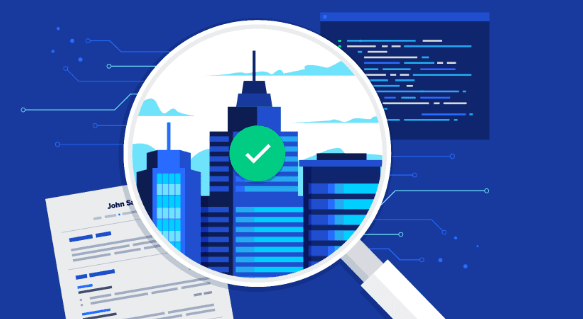
Testimonials from Café Owners
Café operators consistently report time savings from automated interview scheduling, eliminating email coordination through restaurant recruitment automation. Multi-location café groups praise centralized hiring, creating consistency across numerous locations via restaurant hiring management.
Customer reviews highlight improved new hire quality from better candidate matching compared to previous manual approaches. Café owners appreciate mobile access enabling hiring management while on-site rather than requiring office desk time.
Hiring Managers' Experience
Hiring managers describe liberation from administrative tasks, redirecting attention to actual candidate evaluation. Multi-location managers praise visibility into hiring progress across numerous sites from a single dashboard.
Front-line managers value mobile app access, enabling application review during operational downtime. Recruiting coordinators report 50% or greater reduction in administrative work, allowing focus on candidate relationship building.
Pros & Cons of Top ATS Systems
Advantages commonly cited: User-friendly interfaces requiring minimal training, excellent customer support responsiveness, effective candidate matching reducing poor hires, significant time savings compared to manual processes, and improved hiring consistency across locations.
Challenges noted: Initial learning curve as teams adapt to new workflows, integration complexity when connecting to existing systems, cost considerations, particularly for small operations, implementation time before full productivity, and need for consistent discipline to avoid reverting to previous informal methods.
Platform selection should match specific restaurant needs rather than pursuing the highest-feature option unnecessarily. Post-implementation training ensures team adoption and maximizes realized benefits. Regular system usage monitoring identifies underutilization opportunities.
15. Conclusion: The Future of Restaurant Hiring with Applicant Tracking Systems

Why Modern Restaurants Must Adopt ATS
Competitive hiring dynamics mean restaurants that move more slowly lose qualified candidates to competitors offering faster hiring processes. Labor market realities show candidates accept first viable offers, making hiring speed a competitive differentiator.
Operational efficiency requires hiring systems matching restaurant pace—manual processes create bottlenecks, slowing the entire business. Cost containment through hiring automation delivers ongoing savings exceeding the implementation investment within months.
Data-driven decision making through ATS analytics enables continuous improvement rather than repeating past mistakes. Industry evolution means that restaurants using outdated manual processes progressively fall behind technology-enabled competitors.
Final Recommendation for 2025 Hiring Success
Investment in purpose-built restaurant ATS represents essential modern business infrastructure, not luxury software. Selection should prioritize fit with your specific operation size, complexity, and integration requirements rather than pursuing comprehensive feature sets.
Implementation success requires organizational commitment from leadership through front-line manager adoption of new workflows. Immediate benefits in hiring speed and candidate quality provide quick payback for system investment.
Long-term advantages in data utilization, scaling capability, and competitive positioning grow as organizational expertise develops. The future of restaurant hiring belongs to organizations embracing technology-enabled processes that attract, evaluate, and onboard talent faster and smarter than traditional manual approaches through a comprehensive applicant tracking system for restaurant solutions.
